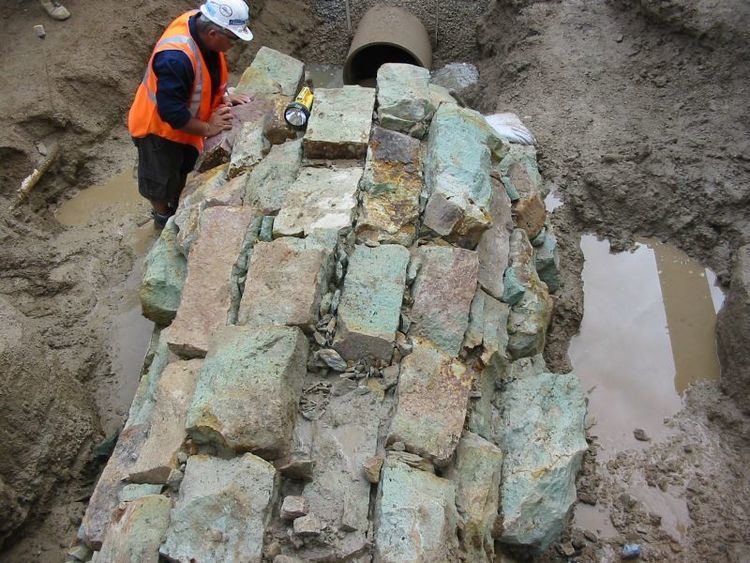 | ||
Gts4 diamond rock saw cutting footings in brisbane tuff
Brisbane tuff is a type of rock, formed as a result of a volcanic eruption. As the name suggests, it is a type of tuff found in Brisbane, Queensland, Australia.
Contents
Brisbane tuff is a form of welded ignimbrite. It is found in various parts of Brisbane and was quarried extensively in the early history of Brisbane at the Kangaroo Point Cliffs and the (now) Windsor Town Quarry Park for use in construction of Brisbane's earliest buildings.
Brisbane tuff comes in a variety of colours: pink, green, blue (grey) and purple. The different colours are due to the extent of oxidation of iron and manganese.
It is often incorrectly described as porphyry.
Construction
Brisbane tuff has been used in the construction of the following Brisbane buildings, many of them now heritage-listed:
Tunnelling
The extent and hardness of Brisbane tuff deposits has often been a barrier to building tunnels in Brisbane due to its 100—150 megapascal strength. However, since 2007, advances in tunnel-boring equipment with tungsten carbide cutting heads has enabled a number of major tunnels to be constructed in Brisbane, e.g. the Clem Jones Tunnel which passes through the Kangaroo Point area.
